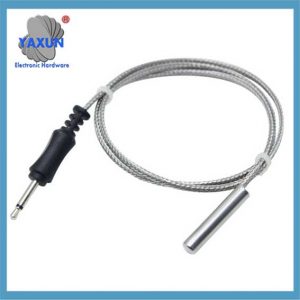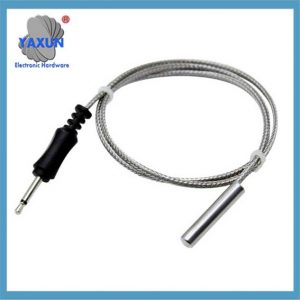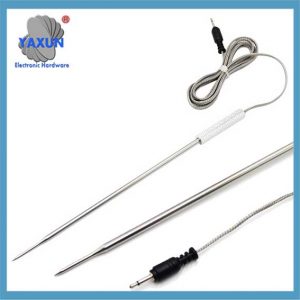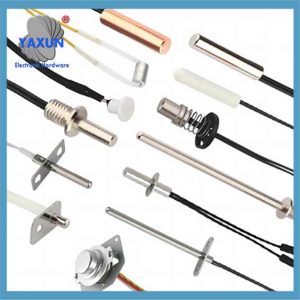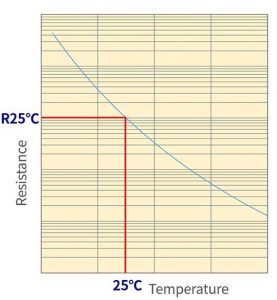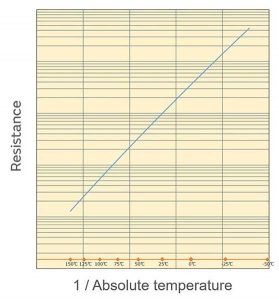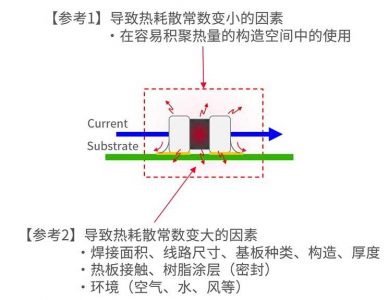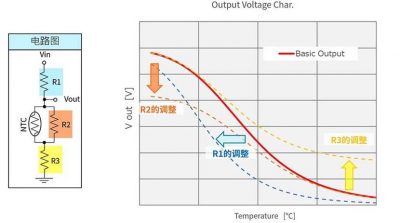ürün kategorileri
Ürün Etiketleri
Çin Özel NTC Sensör Probu ve Kablosu
Sensör gibi, genellikle ikiye ayrılır: NTC termistör probu, PT100 probu, PT1000 probu, Ds18b20 probu, su sıcaklık probu, otomotiv sensör probu, RTD'ler probu, sıcaklık kontrol probu, sıcaklık ayar probu, ev aletleri sensör probu, vesaire.
Sensör probu ve kablo, sensörün ambalaj formudur, sensörün en temel birimi hangisi. Sensör, makul bir elektronik devre ve harici ambalaj yapısı ile paketlenmiştir. İhtiyacımız olan bazı bağımsız fonksiyonel bileşenler var. Sensör gibi, genellikle ikiye ayrılır: NTC termistör probu, PT100 probu, PT1000 probu, Ds18b20 probu, su sıcaklık probu, otomotiv sensör probu, RTD'ler probu, sıcaklık kontrol probu, sıcaklık ayar probu, ev aletleri sensör probu, vesaire.
Sıcaklık tahmini ve sıcaklık ölçüm yöntemine dayanan bir NTC prob yapısı, Prob içerir: Birden çok NTC probu; bakır kabuğu; Metal Destek Yapısı, tel ve ısı iletkeni.
Adım 1, M NTC probları arasında, T0 sıcaklıklarını elde edin, T1, …, TN, her NTC probu boyunca eşit zaman aralıklarında ölçüldü, burada n, toplanan sıcaklığın seri numarasını temsil eder;
Adım 2, Sıcaklık farkını hesaplayın VN = TNTN1 Bitişik sıcaklık ölçüm sürelerinde toplanan TNTN1;
Adım 3, α = VN/VN1 parametresini hesaplayın;
Adım 4, tahmini sıcaklığı hesaplayın TP = TN1+VN/(1A) tek bir probun;
Adım 5, Ölçülen sıcaklığı hesaplayın TB. Mevcut buluş hatayı daha da azaltabilir ve genel uygulanabilirliğe sahiptir.
Termistörlerin tam analizi!
🤔 Bir termistörün ne olduğunu biliyor musunuz?? Elektronik devrelerde biraz uzman!
👍 Termistörler, basit terimlerle, Direnç değerini sıcaklık değişikliklerine göre ayarlayabilen bir tür hassas eleman türüdür..
🔥 Pozitif sıcaklık katsayısı termistör (PTC), sıcaklık yükseldiğinde, Direnç değeri önemli ölçüde artacak. Bu özellik, otomatik kontrol devrelerinde parlamasını sağlar!
Negatif sıcaklık katsayısı termistör (NTC) tam tersi, sıcaklık arttığında direnç azalırken. Ev aletlerinde, Genellikle yumuşak başlangıç için kullanılır, Otomatik algılama ve kontrol devreleri.
💡 Artık termistörler hakkında daha derin bir anlayışa sahipsiniz! Elektronik dünyada, vazgeçilmez bir rol!
1. NTC'ye Giriş
NTC termistör, negatif sıcaklık katsayısının kısaltmasından sonra adlandırılan bir termistördür. Genellikle, dönem “termistör” NTC termistörlerini ifade eder. Michael Faraday tarafından keşfedildi, o sırada gümüş sülfür yarı iletkenleri kim çalışıyordu, içinde 1833, ve 1930'larda Samuel Reuben tarafından ticarileştirildi. NTC termistör, manganezden oluşan bir oksit yarı iletken seramiktir (MN), nikel (İçinde) ve kobalt (Ortak).
Hayatımızın her yerinde görülebilir. Sıcaklık artışı ile direnç azaldığı özellik nedeniyle, Sadece termometrelerde ve klimalarda bir sıcaklık algılama cihazı olarak kullanılmaz., veya akıllı telefonlarda bir sıcaklık kontrol cihazı, su ısıtıcıları ve ütüler, aynı zamanda güç kaynağı ekipmanlarında mevcut kontrol için de kullanılır. Son zamanlarda, Araç elektrifikasyon derecesi arttıkça, Termistörler otomotiv ürünlerinde giderek daha fazla kullanılıyor.
2. Çalışma prensibi
Genel olarak, Sıcaklık arttıkça metallerin direnci artar. Bunun nedeni, ısının kafes titreşimini yoğunlaştırmasıdır, ve serbest elektronların ortalama hareket hızı buna göre azalır.
Tersine, Yarı iletkenlerde serbest elektron ve delik oranı ısı iletimi nedeniyle artar, Ve bu kısım, hızın azaldığı parçanın oranından daha büyük, Böylece direnç değeri azalır.
Ek olarak, Yarıiletkenlerde grup boşluğunun varlığı nedeniyle, Harici olarak ısıtıldığında, değerlik bandındaki elektronlar iletim bandına taşınır ve elektrik. Başka bir deyişle, Sıcaklık arttıkça direnç değeri azalır.
3. Temel özellikler
3.1 Direnç sıcaklığı özellikleri (R-T özellikleri)
Bir NTC termistörünün direnç değeri, yeterince düşük kendi kendine ısıtma ile bir akımda ölçülür (Uygulanan akım nedeniyle üretilen ısı). Standart olarak, Maksimum çalışma akımının kullanılması önerilir. Ve, Direnç değerinin sıcaklık ile çiftler halinde ifade edilmesi gerekir.
Karakteristik eğri aşağıdaki formül tarafından tanımlanmıştır:
R0, R1: T0 sıcaklıkta direnç değeri, T1
T0, T1: mutlak sıcaklık
B: B Sabit
Figür 1: NTC termistörünün R-T özelliği
3.2 B Sabit
B sabiti, NTC termistörünü karakterize eden tek bir değerdir. B sabitinin ayarlanması her zaman iki nokta gerektirir. B sabiti iki noktanın eğimini tanımlar.
İki nokta farklıysa, B sabiti de farklı olacak, Bu yüzden lütfen karşılaştırırken dikkat edin. (Şekil 2)
Figür 2: Seçilen farklı B sabitleri 2 puan
Bundan, B'nin LNR vs eğimi olduğu görülebilir. 1/T eğrisi:
Murata, B sabitini tanımlamak için 25 ° C ve 50 ° C kullanır, B olarak yazılmış (25/50).
Şekilde gösterildiği gibi 3, 1/T (T mutlak sıcaklıktır) direnç değeri ile logaritmik oranda. İlişkinin düz bir çizgiye yakın olduğu görülebilir.
Figür 3: Yatay eksen olarak 1/t ile sıcaklık özellikleri
3.3 Volt-ampere özellikleri (V-I özellikleri)
NTC termistörlerinin V-I özellikleri Şekilde gösterilmiştir 4.
Figür 4: V-I NTC termistörlerinin özellikleri
Düşük akımlı bölgede, Ohmik temasın voltajı, akım kademeli olarak arttıkça kademeli olarak artar. Akımın akışından kaynaklanan kendi kendine ısıtma, termistörün ve diğer parçaların yüzeyinden ısıyı dağıtarak direnç sıcaklığının yükselmesine neden olmaz..
Fakat, Isı üretimi büyük olduğunda, Termistörün sıcaklığı yükselir ve direnç değeri azalır. Böyle bir alanda, Akım ve voltaj arasındaki orantılı ilişki artık geçerli değil.
Genel olarak, Termistörler, kendi kendine ısıtmanın mümkün olduğunca düşük olduğu bir alanda kullanılır. Standart olarak, Çalışma akımının maksimum çalışma akımının altında tutulması önerilir.
Voltaj zirvesini aşan bir alanda kullanılırsa, Tekrarlanan ısıtma ve azaltılmış direnç gibi termal kaçak reaksiyonlar meydana gelebilir, termistörün kırmızıya dönmesine veya kırılmasına neden olur. Lütfen bu aralıkta kullanmaktan kaçının.
3.4 Sıcaklık Direnç Katsayısı (A)
Birim sıcaklık başına NTC termistörünün değişim oranı, sıcaklık katsayısıdır, aşağıdaki formül tarafından hesaplanır.
Örnek: Sıcaklık 50 ° C'ye yakın olduğunda ve B sabiti 3380k olduğunda
A = −3380/(273.15 + 50)² × 100 [%/°C] = −3.2 [%/°C]
Öyleyse, Dirençin sıcaklık katsayısı aşağıdaki gibidir.
A = - b/t² × 100 [%/°C]
3.5 Termal dağılma sabiti (D)
Ortam sıcaklığı T1 olduğunda, Termistör gücü tükettiğinde (mw) ve sıcaklığı T2'ye değişir, Aşağıdaki formül tutar.
P = D (T2 - T1)
Δ termal dağılma sabitidir (mW/°C). Yukarıdaki formül aşağıdaki gibi dönüştürülmüştür.
d = p/ (T2 - T1)
Termal dağılım sabiti Δ, kendi kendine ısıtma koşulları altında sıcaklığı 1 ° C artırmak için gereken gücü ifade eder..
Termal dağılma sabiti Δ, “güç tüketimi nedeniyle kendi kendine ısıtma” Ve “Isı dağılımı”, ve bu nedenle termistörün çalışma ortamına bağlı olarak önemli ölçüde değişir.
Murata kavramını tanımladı “Birim eleman başına termal dağılma sabiti”.
3.6 Termal zaman sabiti (T)
T0 sıcaklıkta tutulan bir termistör aniden ortam sıcaklığına değiştirildiğinde T1, Hedef sıcaklık T1'de değişmek için gereken süreye termal zaman sabiti denir (T). Genellikle, Bu değer, ulaşmak için gereken süreyi ifade eder 63.2% T0 ve T1 arasındaki sıcaklık farkı.
Bir termist bir sıcaklıkta korunduğunda (T0) başka bir sıcaklığa maruz kalıyor (T1), sıcaklık katlanarak değişir, ve sıcaklık (T) Zamanın geçmesinden sonra (T) aşağıdaki gibi ifade edilir.
T = (T1 − T0) (1 - exp (−T/t) ) + T0
T = τ al,
T = (T1 − T0) (1−1/e) + T0
(T - T0)/(T1 − T0) = 1 - 1/e = 0.632
Bu yüzden τ ulaşma zamanı olarak belirtilir 63.2% sıcaklık farkı.
Figür 6: NTC termistörünün termal zaman sabiti
3.7 Maksimum voltaj (Vmax)
Termistöre doğrudan uygulanabilen maksimum voltaj. Uygulanan voltaj maksimum voltajı aştığında, Ürün performansı kötüleşecek ve hatta yok edilecek.
Ek olarak, Bileşenin sıcaklığı kendi kendine ısıtma nedeniyle artar. Bileşenin sıcaklığının çalışma sıcaklığı aralığını aşmadığına dikkat etmek gerekir..
Figür 7: NCU15 tipi için maksimum voltaj türetmesi
3.8 Maksimum çalışma akımı (GİB), maksimum çalışma voltajı (GTC)
Murata, maksimum çalışma akımı ve maksimum çalışma voltajını, uygulandığında kendi kendine ısıtmanın 0.1 ℃ olduğu akım ve voltaj olarak tanımlar. Bu değere göre, Termistörler daha doğru sıcaklık ölçümü elde edebilir.
Öyleyse, Akım/voltajın uygulanması, maksimum çalışma akımı/voltajını aşan termistör performans bozulmasına neden olmaz. Fakat, Bileşenin kendi kendine ısıtılmasının algılama hatalarına neden olacağını lütfen unutmayın.
Murata maksimum çalışma akımını nasıl hesaplar?
Maksimum çalışma akımını hesaplarken, termal dağılma sabiti (1mW/°C) Ünite bileşeni tarafından tanımlanan. Termal dağılma sabiti, ısı dağılma derecesini gösterir, Ancak ısı dağılma durumu, çalışma ortamına bağlı olarak büyük ölçüde değişir.
Çalışma ortamı malzemeyi içerir, kalınlık, yapı, lehimleme alanı boyutu, Sıcak Plaka Kişisi, reçine ambalajı, vesaire. substratın. Birim bileşen tanımının kullanımı çevresel parazit faktörlerini ortadan kaldırır.
Deneyime göre, Gerçek kullanımdaki termal dağılım sabiti yaklaşık 3 ile 4 times that of the unit component. Assuming that the actual thermal dissipation constant is 3.5 kez, the maximum operating current is shown in the blue curve in the figure. Compared with the case of 1mW/°C, it is now 1.9 kez (√3.5 times).
3.9 Zero load resistance value
The resistance value measured at a current (voltage) where self-heating is negligible. Standart olarak, Maksimum çalışma akımının kullanılması önerilir.
Figür 9: Murata’nın Direnç Değeri Ölçüm Yöntemi
4. How to use
4.1 Devre şeması
The output voltage may vary depending on the NTC thermistor wiring diagram. You can simulate it at the following URL on the Murata official website.
SimSurfing: NTC Thermistor Simulator (murata.co.jp)
Figür 10 Output characteristics of resistor grounding and thermistor grounding circuits
4.2 Adjustment of R1 (voltage divider resistor), R2 (parallel resistor), R3 (series resistor)
The output voltage may vary according to the circuit diagram.
Figür 11 Adjustment of R value and change of output characteristics
4.3 Murata’nın resmi aracı kullanılarak tespit hatasının hesaplanması
NTC termistörünün ilgili parametrelerini ve voltaj bölücü devresinin ilgili parametrelerini seçin (Referans voltaj ve voltaj bölücü direnci, direnç doğruluğu), ve sonra sıcaklık tespitinin hata eğrisi normal olarak üretilebilir, Aşağıdaki şekilde gösterildiği gibi:
Figür 12 Resmi araçları kullanarak sıcaklık algılama hatası eğrisi üretme
Bize Ulaşın
E-postanızı bekliyorum, size içinde cevap vereceğiz 12 ihtiyaç duyduğunuz değerli bilgilerle saatler.
 English
English العربية
العربية Български
Български 粤语
粤语 中文(简体)
中文(简体) 中文(漢字)
中文(漢字) Nederlands
Nederlands Suomi
Suomi Français
Français Deutsch
Deutsch Ελληνικά
Ελληνικά Magyar
Magyar Italiano
Italiano 日本語
日本語 한국어
한국어 Polski
Polski Português
Português Română
Română Русский
Русский Slovenščina
Slovenščina Español
Español Svenska
Svenska ภาษาไทย
ภาษาไทย Türkçe
Türkçe Tiếng Việt
Tiếng Việt







